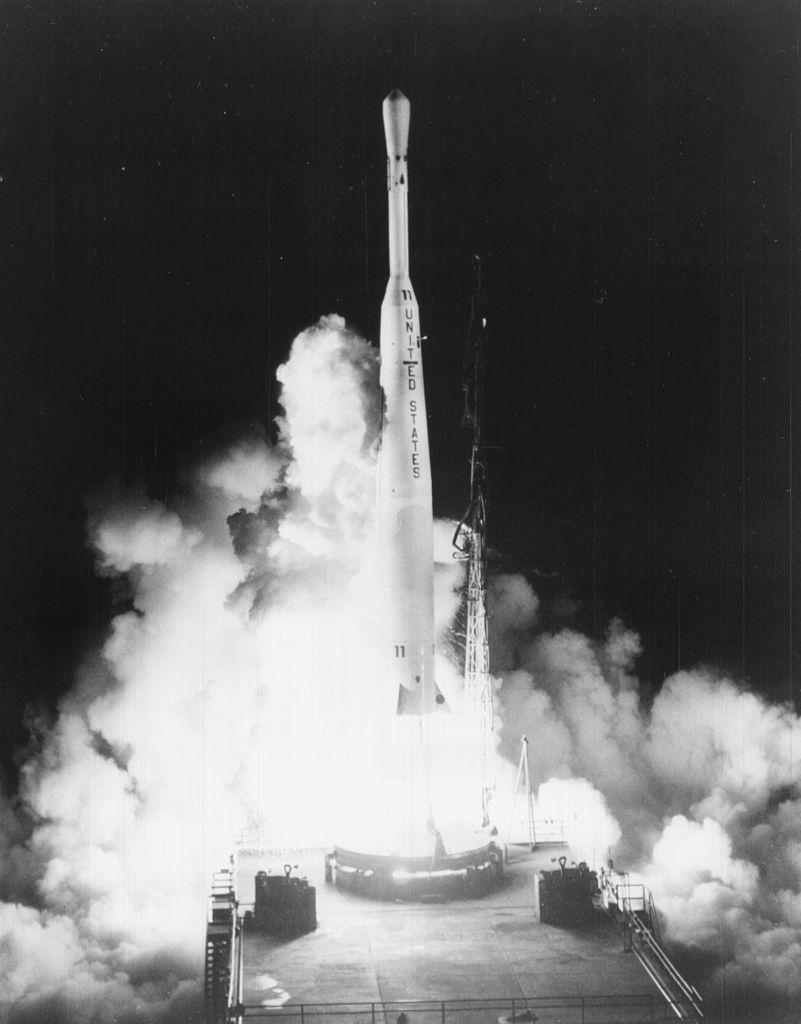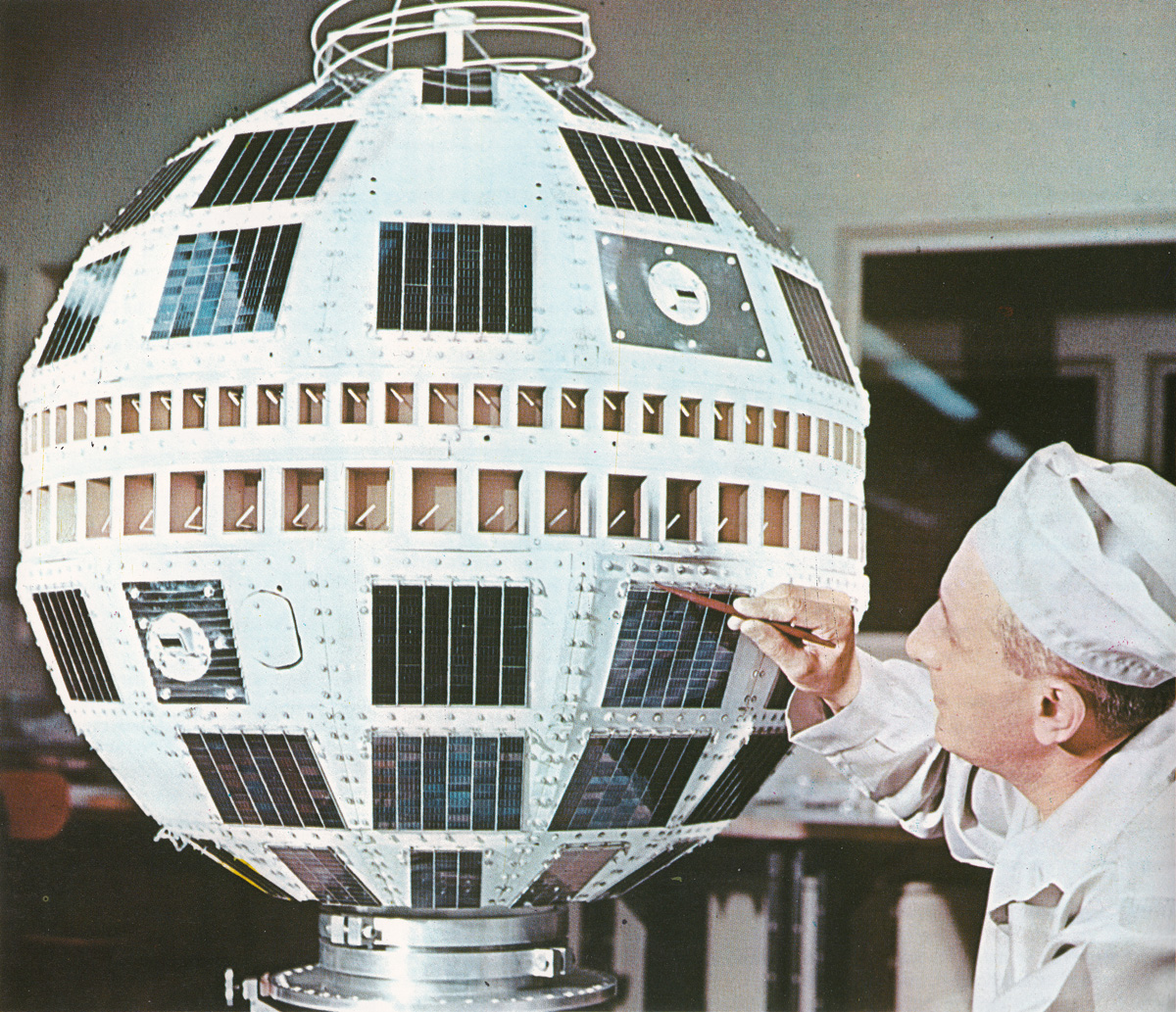
10 July 1962: At 0835 GMT (4:35 a.m., EDT) the first communications relay satellite, Telstar 1, was launched into Earth orbit from Launch Complex 17B, Cape Canaveral Air Force Station, Florida. The launch vehicle was a three-stage liquid-fueled Delta rocket.
This was the first commercial space flight, sponsored by a consortium of communications companies and government organizations, including AT&T, Bell Labs, the BBC, NASA, and British and French postal services. The satellite was used to relay live television broadcasts across the Atlantic Ocean. This had never previously been possible.
Telstar weighed 171 pounds (77.5 kilograms). Its weight and size were restricted by the availability of launch vehicles. The satellite was placed in an elliptical orbit, varying from 591 miles (952 kilometers) to 3,686 miles (5,933 kilometers), and inclined at about a 45° angle to Earth’s Equator. The orbital period was 2 hours, 37 minutes. The properties of Telstar’s orbit restricted its use to about 20 minutes during each pass.
In addition to its primary role as a communications relay satellite, Telstar also performed scientific experiments to study the Van Allen Belt.
 The Delta was a three-stage expendable launch vehicle which was developed from the Douglas Aircraft Company’s SM-75 Thor intermediate-range ballistic missile.
The Delta was a three-stage expendable launch vehicle which was developed from the Douglas Aircraft Company’s SM-75 Thor intermediate-range ballistic missile.
Designated Thor DM-19, the first stage was 60.43 feet (18.42 meters) long and 8 feet (2.44 meters) in diameter. Fully fueled, the first stage had a gross weight of 108,770 pounds (49,337 kilograms). It was powered by a Rocketdyne LR-79-7 engine which burned liquid oxygen and RP-1 (a highly-refined kerosene rocket fuel) and produced 170,565 pounds of thrust (758.711 kilonewtons). This stage had a burn time of 2 minutes, 45 seconds.
The second stage was an Aerojet General Corporation-built Delta 104. It was 19 feet, 3 inches (5.88 meters) long with a maximum diameter of 4 feet, 6 inches (1.40 meters). The second stage had a gross weight of 9,859 pounds (4,472 kilograms). It used an Aerojet AJ10-104 rocket engine which burned a hypergolic mixture of nitric acid and UDMH. The second stage produced 7,890 pounds of thrust (35.096 kilonewtons) and burned for 4 minutes, 38 seconds.
The third stage was an Allegany Ballistics Laboratory Altair 1. It was 6 feet long, 1 foot, 6 inches in diameter and had a gross weight of 524 pounds (238 kilograms). This stage used a solid-fuel Thiokol X-248 rocket engine, producing 2,799 pounds of thrust (12.451 kilonewtons). Its burn time was 4 minutes, 16 seconds.
The three stages of the Delta rocket accelerated the Telstar satellite to 14,688 miles per hour for orbital insertion.
The day prior to launch, the United States detonated a 1.45 megaton thermonuclear warhead at an altitude of 248 miles (400 kilometers), near Johnston Island in the Pacific Ocean. (Operation Dominic-Fishbowl Starfish Prime). Between 21 October 1961 and 1 November 1962, the Soviet Union detonated five nuclear warheads in space (Project K), at altitudes ranging from 59 to 300 kilometers (37–186 miles) over a test range in Khazakhstan. High energy electrons from these tests were trapped in the Earth’s radiation belts. This damaged the satellite’s circuitry and it went out of service in December 1962. ¹
Engineers were able to work around the damage and restore service by January 1963, but Telstar 1 failed permanently 21 February 1963.
Telstar is still in Earth orbit.

¹ Thanks to regular TDiA reader Steve Johnson for this information.
© 2019, Bryan R. Swopes